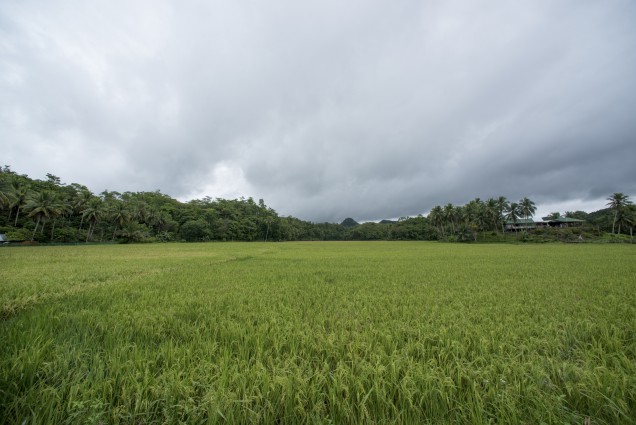The list of rice varieties adaptable to each region has been released after being proven competitive both in dry and wet seasons through the project dubbed as Accelerating the development and adoption of next-generation (Next-Gen) rice varieties for major ecosystem in the Philippines.
“These were tested by the farmers themselves through participatory variety trials (PVS). Yield stability, pest and disease resistance, and grain quality were the main criteria used to prove the competitiveness of the varieties,” says Thelma Padolina, PhilRice senior plant breeder.
The varieties were approved for commercialization by the National Seed Industry Council (NSIC).
Dr. Flordeliza H. Bordey, PhilRice Deputy Director for Research, along with other experts made sure that these varieties are highly suitable by validating them using the results of the National Cooperative Test (NCT) for rice, farmers’ preferences as reported by regional coordinators, value chain analysis project, and the rice seed system workshop output.
Farmers may opt to use either the existing rice varieties adaptable in their area, or the newly-registered varieties tested for suitability in their own locality.
In Regions 7 and 8, each province is provided with separate recommendations owing to their unique ecosystems.
Padolina noted that seeds of these varieties are also available in the region or through the local seed growers in the areas.
“To ensure that the recommended varieties are accessible in the regions, the project pushed for the participation of local seed growers in the second phase of the PVS where they have tested and produced the starter seeds,” says Padolina.
The Next-Gen project is a collaborative effort between PhilRice, International Rice Research Institute, University of the Philippines Los Baños, and the DA-Regional Field Offices under the Food Self Sufficiency Program of the DA National Rice Program, and is being funded by the DA-Bureau of Agricultural Research.
Below is the list of rice varieties suitable for every region:
| Region | Existing adaptable varietiesin the region | Newly-registered varieties tested in the region |
| Cordillera Administrative Region | PSB Rc 18 | NSIC Rc 308 |
| PSB Rc 82 | NSIC Rc 354 | |
| Region 1 | NSIC Rc 214 | NSIC Rc 352 |
| NSIC Rc 298 | NSIC Rc 358 | |
| Region 2 | NSIC Rc 308 | NSIC Rc 400 |
| NSIC Rc 352 | NSIC Rc 402 | |
| Region 3 | PSB Rc 10 | NSIC Rc 354 |
| PSB Rc 18 | NSIC Rc 402 | |
| NSIC Rc 218 | ||
| Region 4A | PSB Rc18 | NSIC Rc 354 |
| PSB Rc 82 | NSIC Rc 394 | |
| NSIC Rc 218 | ||
| Region 4B | PSB Rc 18 | NSIC Rc 354 |
| NSIC Rc 218 | NSIC Rc 302 | |
| Region 5 | NSIC Rc 302 | NSIC Rc 352 |
| NSIC Rc 308 | NSIC Rc354 | |
| Region 6 | NSIC Rc 226 | NSIC Rc 354 |
| NSIC Rc 308 | NSIC Rc 356 | |
| NSIC Rc 358 | ||
| NSIC Rc 360 | ||
| Region 7 | NSIC Rc 354 | |
| Bohol | NSIC Rc 302 | |
| NSIC Rc 356 | ||
| Cebu | NSIC Rc 302 | |
| NSIC Rc 226 | ||
| Negros Oriental | NSIC Rc 224 | |
| NSIC Rc 302 | ||
| Siquijor | NSIC Rc 302 | |
| NSIC Rc 308 | ||
| Region 8 | NSIC Rc 400 | |
| Biliran | NSIC Rc 354 | |
| NSIC Rc 358 | ||
| Eastern Samar | NSIC Rc 302 | |
| NSIC Rc 354 | ||
| Leyte | PSB Rc 18 | |
| NSIC Rc 218 | ||
| Northern Samar | PSB Rc 18 | |
| PSB Rc 82 | ||
| Western Samar | PSB Rc 18 | |
| PSB Rc 82 | ||
| Southern Leyte | PSB Rc 18 | |
| Region 9 | NSIC Rc 224 | NSIC Rc 354 |
| NSIC Rc 358 | NSIC Rc 400 | |
| Region 10 | PSB Rc 18 | NSIC Rc 354 |
| NSIC Rc 158 | NSIC Rc 400 | |
| Region 11 | PSB Rc 18 | NSIC RC 302 |
| PSB Rc 82 | NSIC Rc 308 | |
| Region 12 | NSIC Rc 158 | NSIC Rc 354 |
| NSIC Rc 226 | NSIC Rc 308 | |
| Caraga | PSB Rc 18 | NSIC Rc 354 |
| PSB Rc 82 | NSIC Rc 400 | |
| Autonomous Region in Muslim Mindanao | PSB Rc 18 | NSIC Rc 308 |
| NSIC Rc 224 | NSIC Rc 400 | |





